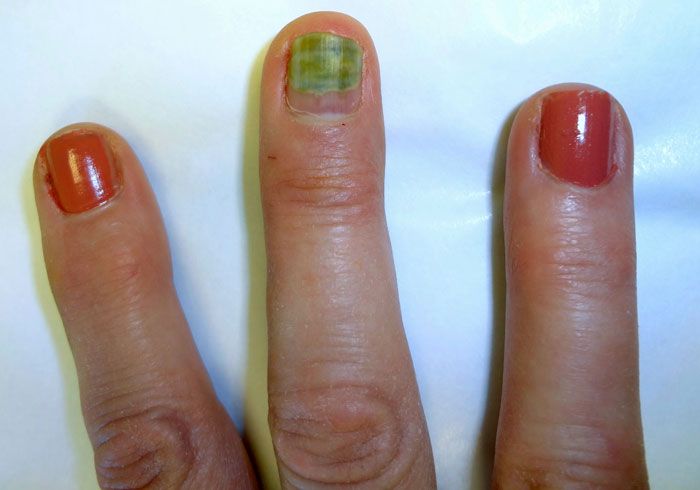Onycholysis From Subungual Pseudomonas aeruginosa Colonization
This green discoloration is the result of subungual Pseudomonas aeruginosa colonization. Pathogenic bacteria can enter this space via many causes, including trauma or underlying lesions.

A 54-year-old woman sought medical attention after the appearance of a green fingernail.
Key point: Subungual green discoloration means that Pseudomonas aeruginosa has colonized the space underneath a nail that has generally separated from the underlying nail bed (onycholysis).
Treatment: Therapy consisted of twice-daily topical application of ciprofloxacin otic drops.
Note: Once the Pseudomonas-induced discoloration has resolved, the clinician must attempt to determine what caused the onycholysis that allowed the pathogenic bacteria to enter the subungual space. This can be the result of many causes, including (but not limited to): trauma, a subungual wart or squamous cell carcinoma, or an underlying osteoma.